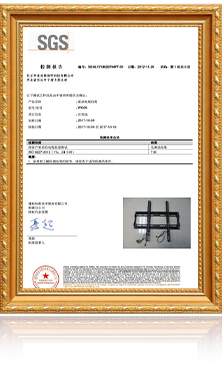Wholesale TV Rack Manufacturing Solutions for Retailers in a Competitive Market
Wholesale TV Rack Manufacturing Solutions for Retailers in a Competitive Market
Understanding Wholesale Rack Solutions for TV Factories
In the fast-paced world of electronics manufacturing, particularly in the realm of television production, efficiency and organization are paramount. One essential component that contributes significantly to streamlining operations in TV factories is the wholesale rack system. This article delves into the importance, benefits, and considerations of utilizing wholesale racks in television assembly plants.
The Importance of Wholesale Racks in TV Factories
TV factories are complex environments where various components must be assembled with precision. The sheer volume of parts—ranging from screens to circuit boards, cabinets, and cables—demands an organized and systematic approach to storage and retrieval. Wholesale racks serve as an ideal solution, providing robust and accessible storage options that can enhance the workflow.
These racks can be standardized and customized to cater to the specific needs of a factory, accommodating different sizes and weights of parts required in TV assembly. By using a wholesale rack system, manufacturers can optimize their space, reduce clutter, and ensure that each component is stored in an easily accessible manner. This organization can ultimately lead to reduced downtime, fewer errors in assembly, and increased productivity.
Benefits of Using Wholesale Racks
1. Space Optimization One of the most significant benefits of wholesale racks is their ability to maximize available factory space. By utilizing vertical storage solutions, manufacturers can free up floor space for assembly lines and worker movement, leading to a more efficient operational layout.
2. Improved Inventory Management Wholesale racks facilitate better inventory management. With a clear and organized storage system, factory workers can quickly locate the components they need, reducing the time spent searching for parts. This speed translates to improved production cycles and the ability to meet tight market demands.
3. Enhanced Safety Safety is a top priority in any manufacturing environment. Properly designed racks can help minimize hazards by reducing overcrowding and allowing for a systematic approach to storage. Workers can move around safely without the risk of tripping over misplaced items, and there’s less chance of materials being damaged when stored appropriately.
wholesale rack para tv factory

4. Cost-Effectiveness Purchasing wholesale racks often comes with the advantage of bulk pricing, resulting in significant cost savings for TV manufacturers. Investing in high-quality racks can lead to long-term durability and reduced need for replacements or repairs, further enhancing the overall return on investment.
Considerations for Selecting Wholesale Racks
When considering wholesale rack systems for a TV factory, several factors must be kept in mind
- Weight Capacity It’s crucial to select racks that can adequately support the weight of the materials being stored. Evaluate the expected load and consult with manufacturers to find the most suitable options.
- Material Racks can be made from various materials, including steel, plastic, or wood. Choose materials that withstand the factory environment and can endure the rigors of daily use.
- Customization Look for suppliers that offer customization options. Custom racks can be designed to fit specific spaces and accommodate unique storage needs, ensuring optimal functionality within the factory layout.
- Safety Standards Ensure that the selected racks comply with safety regulations and standards. This compliance is integral to promoting a safe working environment.
Conclusion
In conclusion, the integration of wholesale rack systems in TV factories represents a critical investment in operational efficiency. By enhancing organization, improving inventory management, and increasing safety, wholesale racks can play a pivotal role in the production process. As the electronics market continues to evolve, adopting innovative storage solutions like wholesale racks can help manufacturers stay competitive while ensuring that they deliver high-quality products to consumers efficiently. Embracing these practices is not merely a trend but a necessary strategy for thriving in the demanding landscape of television manufacturing.
-
Tilt TV Mount Exporters: Premium, Optimal Viewing SolutionsNewsAug.15,2025
-
Top Tilt TV Mount Exporters - Quality & Factory Direct SupplyNewsAug.14,2025
-
Top Tilt TV Mount Exporters: Quality & Reliable SolutionsNewsAug.13,2025
-
Leading Tilt TV Mount Exporters: Flexible Viewing SolutionsNewsAug.12,2025
-
Top Tilt TV Mount Exporters | Quality & Wholesale SolutionsNewsAug.11,2025
-
Top Tilt TV Mount Exporters | Quality Mounts for Global ExportNewsAug.10,2025
